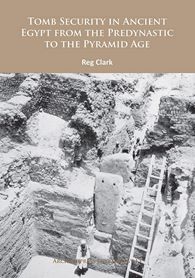| Main » Ad Board » ДРЕВЕН ЕГИПЕТ И АФРИКА » Архитектура |
Reg Clark - Tomb Security in Ancient Egypt from the Predynastic to the Pyramid Age
| 28.02.2023, 12:42 | |
От най-древни времена една от най-важните задачи на египетските архитекти е да предпазят мумиите на погребаните и техните погребални дарове от алчността на не само бъдните, но най-често съвременните мародери. Редом с усложняването и окрупняването на надгробните структури, с развитието на тяхната украса се развиват и различните решения за предпазване на тяхното ценно съдържание. На появата и разгръщането на тези технологични и архитектурни похвати от Преддинастичния период до епохата на пирамидите през периода на Старото царство е посветено настоящото проучване. - на английски език, от MEGA, формат PDF. Сваляне с ляв бутон (downloading by left button) и после през бутона Download.
| |
| Views: 437 | Placed till: 28.03.2023 | Rating: 0.0/0 | |

